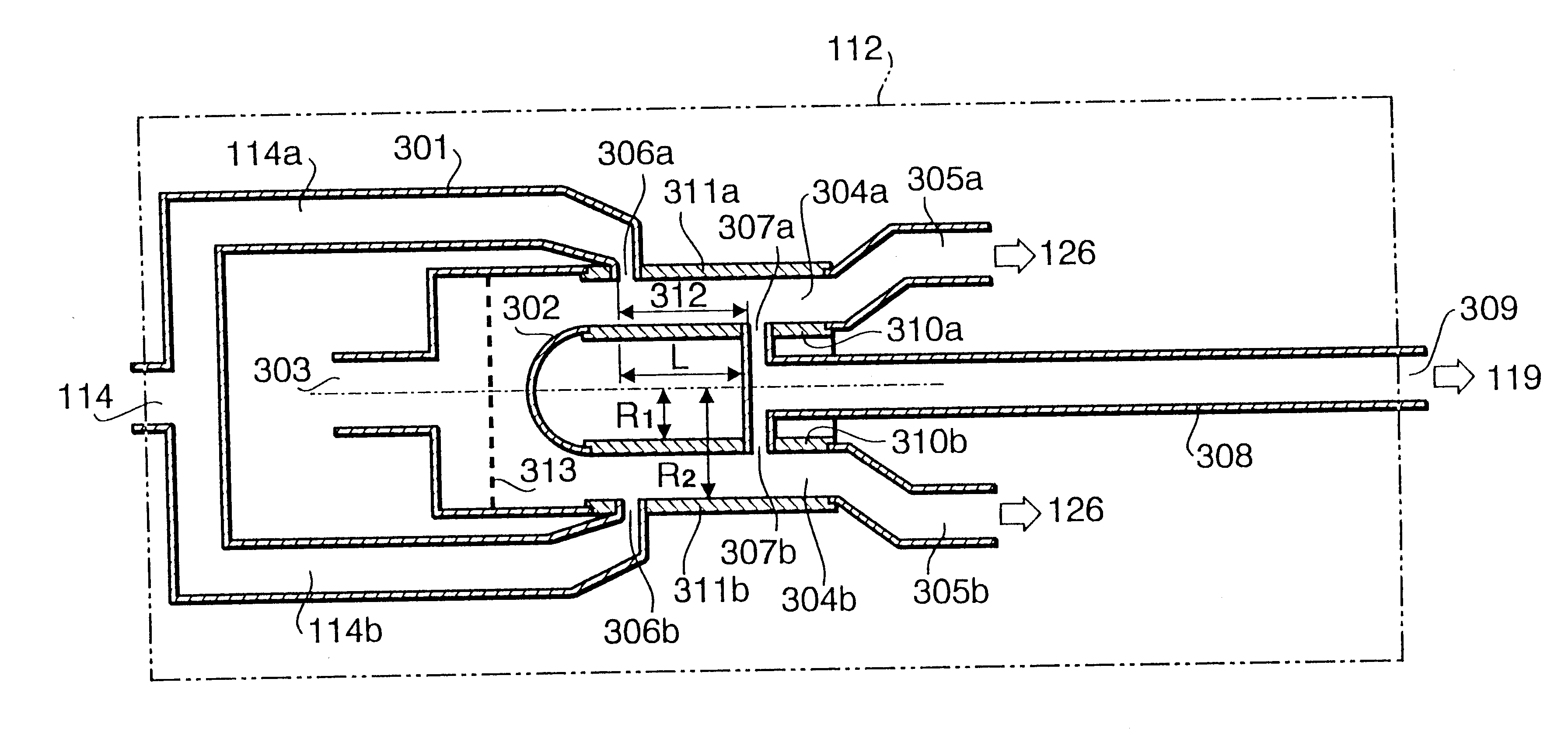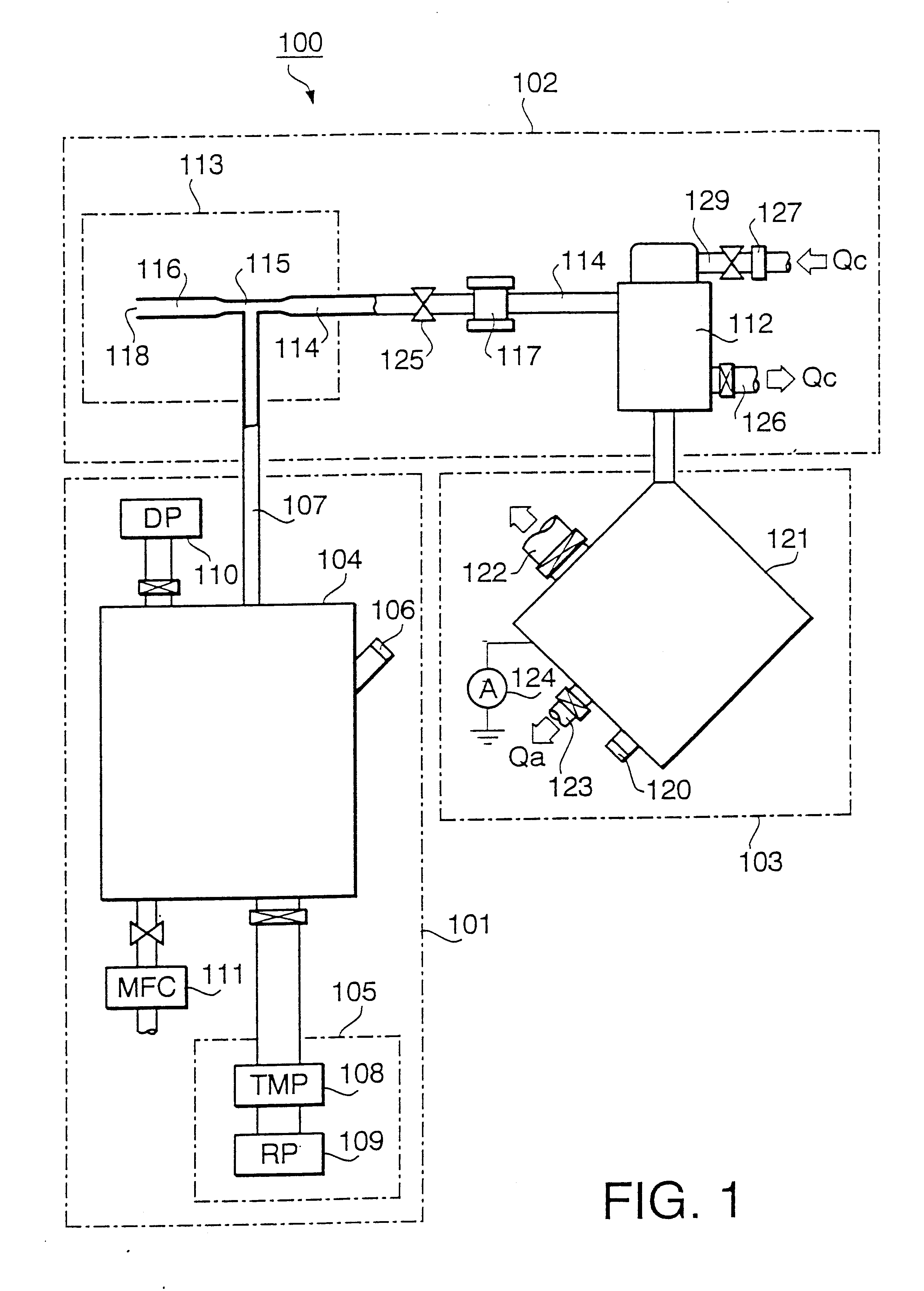Fine particle classification apparatus and method for classifying aerosol particles in a sheath gas
- Summary
- Abstract
- Description
- Claims
- Application Information
AI Technical Summary
Benefits of technology
Problems solved by technology
Method used
Image
Examples
first embodiment
(First Embodiment)
A functional material production apparatus according to the first embodiment of the present invention is specifically explained using accompanying drawings. FIG. 1 illustrates a diagram of a configuration of the inside of the functional material production apparatus according to the first embodiment.
Functional material production apparatus 100 is provided with aerosol generation section 101 which generates an aerosol containing fine particles. Aerosol generation section 101 is connected with aerosol classification section 102 by first aerosol carrying pipe 107. Aerosol classification section 102 classifies the fine particles in the aerosol generated in aerosol generation section 101. Aerosol classification section 102 is connected with deposition section 103 with fine-particle deposition nozzle 119. Deposition section 103 deposits the fine particles classified aerosol classification section 102.
The next description explains aerosol generation section 101. Aerosol g...
second embodiment
(Second Embodiment)
A functional material production apparatus according to the second embodiment of the present invention is explained. The apparatus is obtained by modifying the fine-particle classification apparatus according to the first embodiment to be operated in a pressure lower than the atmospheric pressure. In order to operate the fine-particle classification apparatus in the pressure lower than the atmospheric pressure, it is necessary to exhaust a sheath gas inside the fine-particle classification apparatus efficiently with a high exhaustion rate.
In the second embodiment, in order to achieve the subject, it is noticed that an increase of the cross-section area of the classification region in the fine-particle classification apparatus is efficient. Actually, in order to increase the cross-section area of the classification region in the fine-particle classification apparatus, the form of the cross section of the fine-particle classification apparatus is modified from the d...
PUM
 Login to View More
Login to View More Abstract
Description
Claims
Application Information
 Login to View More
Login to View More - R&D
- Intellectual Property
- Life Sciences
- Materials
- Tech Scout
- Unparalleled Data Quality
- Higher Quality Content
- 60% Fewer Hallucinations
Browse by: Latest US Patents, China's latest patents, Technical Efficacy Thesaurus, Application Domain, Technology Topic, Popular Technical Reports.
© 2025 PatSnap. All rights reserved.Legal|Privacy policy|Modern Slavery Act Transparency Statement|Sitemap|About US| Contact US: help@patsnap.com



